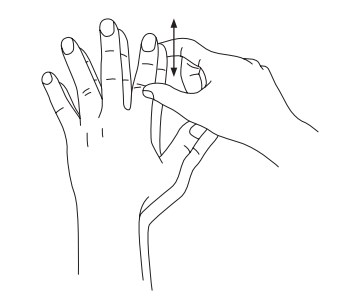In this activity, students confuse their brains as they explore a phenomenon known as perceptual disjunction in this tactile illusion.
Sometimes our brains fail to take all factors into account when processing sensory information. The sensation we think we feel is therefore incomplete, this is a perceptual disjunction. For example, in the activity below, our brains "forget" that there is another object (your partner's finger) blocking us from feeling both sides of our index finger. Stroking only one side of our finger results in the feeling that our finger has gone numb.


